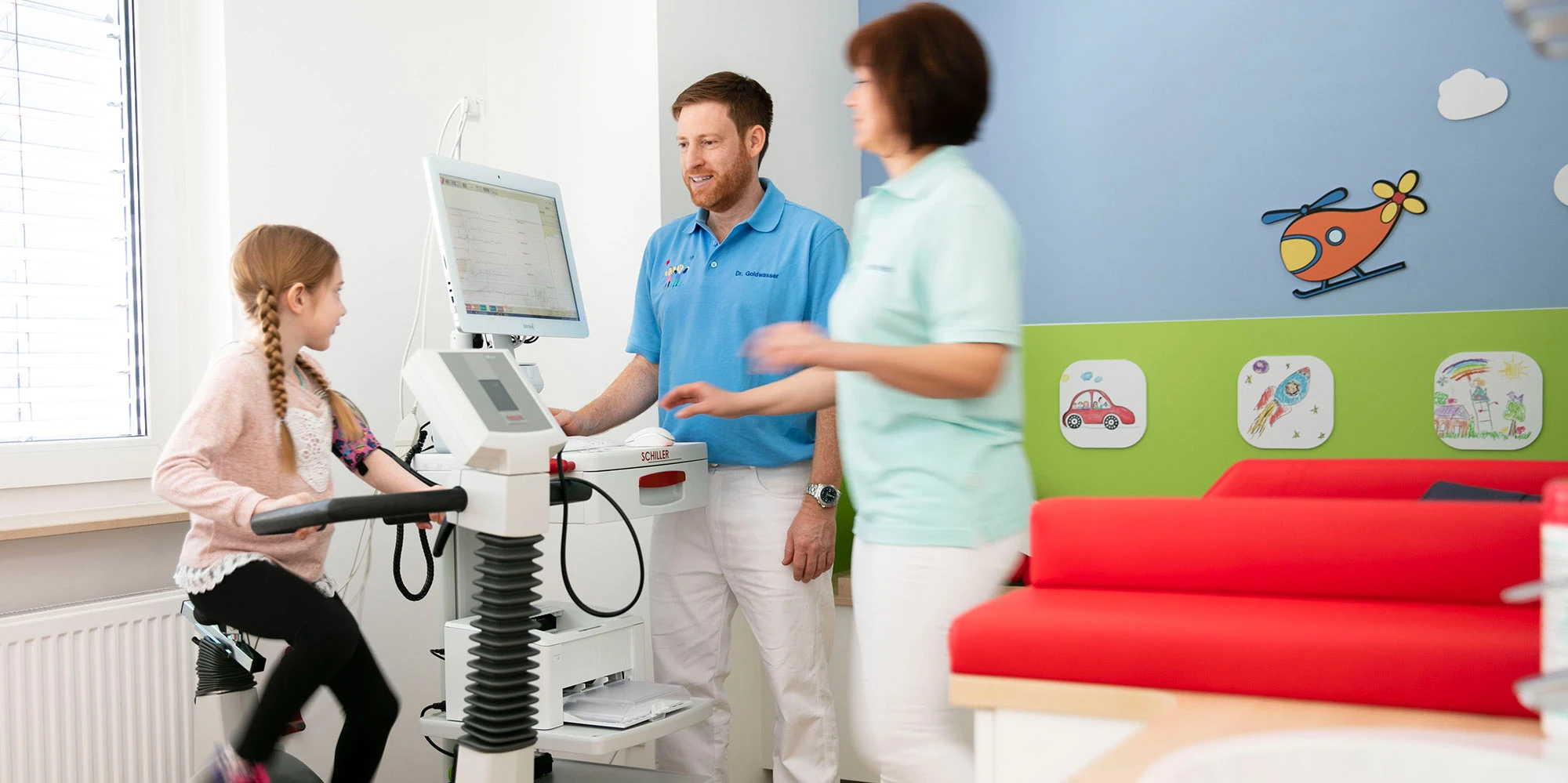
ECG, Holter (24hours ECG), stress ECG, event recorder
The Electrocardiogram (ECG) is a way to record and show all the electrical activity of the cardiac muscles.
Every mechanical pump function of the heart start with an electrical impulse which in normal case is being generated by the sinus node and move from it through the electrical conduction system of the heart. These electrical activities can be recorded on the body surface. With the ECG, one can tell a lot about the activity of the heart as well as its axis, potentials, size and get some clues about the underlying cardiac disease. The ECG shows the electrical activity, BUT doesn’t tell how good the heart is actually pumping the blood.
In our clinic we use the highly modern, paper-free ECG monitor from the company Schiller:
www.schiller.ch.
Stress ECG
In the stress ECG you will be sitting on a bicycle ergometer and perform some exercise during which we will monitor your heart activity via 12 channel ECG as well as pulse oximetry according to a well-established protocol.
This examination can be done in children from approx. School age a s soon as they are tall enough to use the bicycle pedals. We want to provoke those cardiac arrhythmias which develop under stress.
Holter (24hours ECG)
In order to record the Holter ECG, the patient carries on his small ECG device which is in the size of a smart phone for 18-24 hours, and in rare cases even longer up to 72 hours. The Holter ECG is used mostly for the diagnosis and follow up in cardiac arrhythmias. More information over this Theme you can read on the company website under: Fa. Schiller: www.schiller.ch
The heart frequency variability HFV or heart rate variability, HRV) records and show the normal changes in the rhythm in between two normal heart beats.
Echocardiography
The sonography examination of the heart together with the doppler technique to evaluate the anatomy of the heart and the characteristics of the blood flow (so called echocardiography) is a painless, without any side effects examination. With help of this method the examiner looks at the heart and its valves together with the big vessels correlating to it and can assess the cardiac function and anatomy.
Almost all structural anomalies of the heart can be visualized with this method of examination. In our clinic we use the highly modern echocardiography/sonography device Vivid 60 from the known company GE.